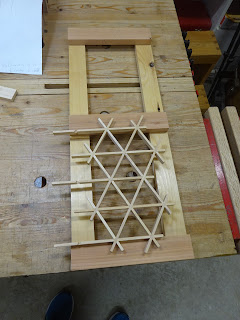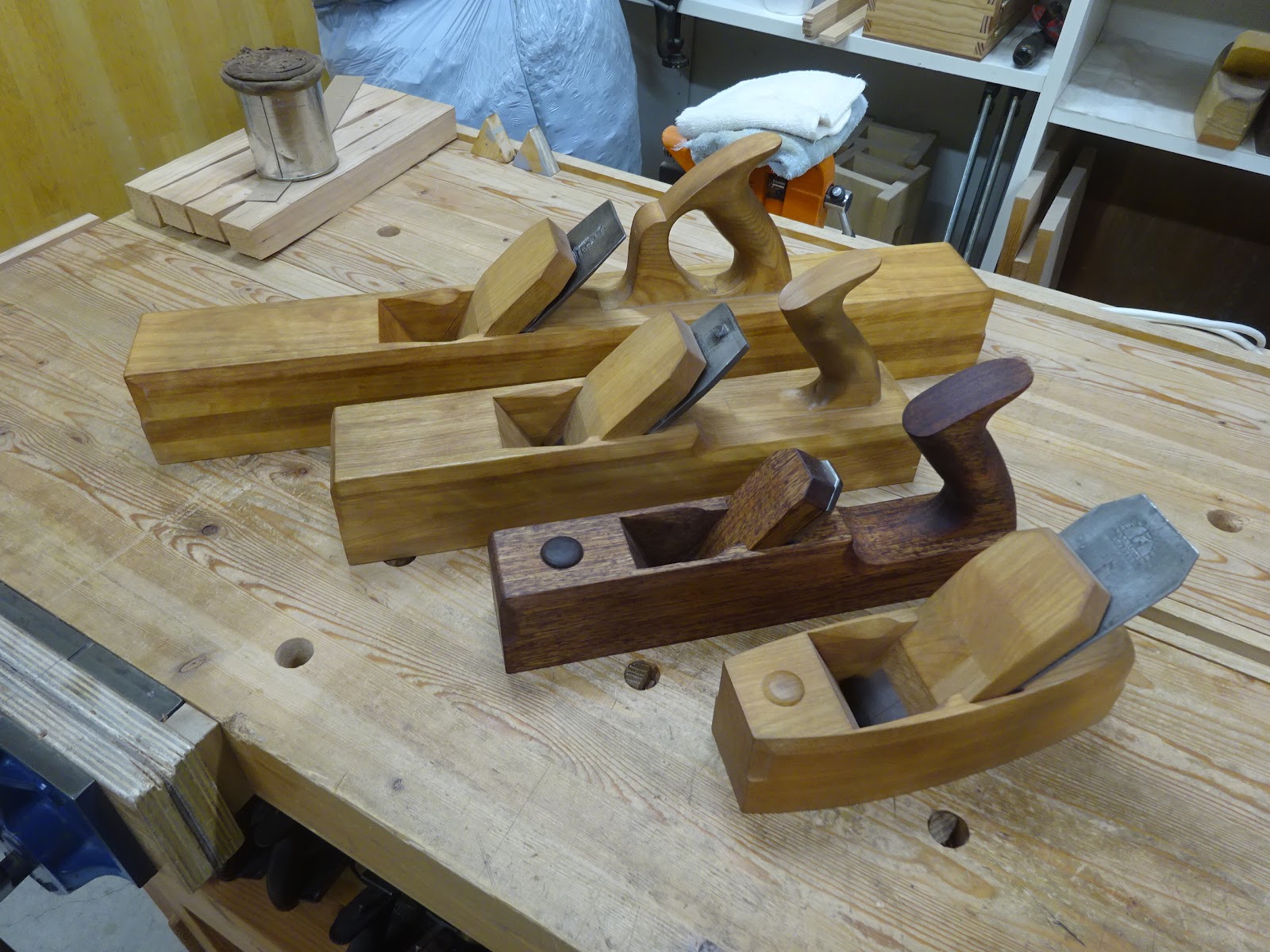Last time I was figuring out how to join stiles and rails that have a bead on the inside edges. I used a lap joint with the beaded area mitered.
 |
| Like this prototype |
Making a few prototype joints was really helpful in the layout of the joints. But I also had to figure out how to fit kumiko panels in the openings with no slop. I agonized over this for quite a long time, but after it's done it seems so simple. I made the kumiko panels first. These were basically two hexagons stacked one on top of the other.
 |
| A prototype kumiko on a prototype door frame to help get dimensions |
For the kumiko above, after trimming the uppermost and lowermost excess pieces, I used a combo square to mark the kumiko left and right sides for trimming, referencing off a straight bottom piece. I marked and cut through the center of the three-way joints. I didn't realize this at the time, but the kumiko would look much better with a vertical border strip on left and right
 |
| Here, centering the kumiko (and extra vertical border strips) on the edge of a rail |
After centering on the rail, I could mark knife lines on the rail at the exact extremes of the kumiko. I transferred those lines to the other two rails, but I'm only doing the joinery for the center rail first. When the joints were complete (making an "H" frame), I could place the kumiko panels in the openings and find out where to mark the stiles for the vertical extents of the kumiko.
 |
| Kumiko in place to find location of the upper and lower rails on the stiles |
But there was a trick to that. The top and bottom kumiko strips (that will be against the rails), bent a little outside of the two three-way joints and they didn't give an accurate total length for the kumiko. So I made the border strips the length of the kumiko at the vertical center of the kumiko - that area was supported by the two three-way joints either side of center and this gave me a much better measurement for the border strips.
 |
| Here's how the center rail will look |
I could then use those border strip to mark the stile for lower extent of the upper rails, use the rail itself to mark the upper extent of the rail on the stile, and cut the joints. It worked very well.
And this was all just prototyping! When it came time for the real thing I was ready. I made no mistakes in marking or executing the joints and it looked great.
 |
| The real thing gluing up. These clamps were not strong enough - I used better ones |
Note that the stiles have extra wood at top and bottom. These "horns" enabled me to make a closed-in lap joint. The horns will be cut off later when I get the door to final dimension.
After the door frame was glued up and dry, I glued in the kumiko panels. For one of them, the side strips needed a little planing to get them to fit. Then I started filling in the small pieces that would go in each triangle.
 |
| First panel glued in: the tape is clamping the areas that bent a little. Also here, starting to fill in the small pieces. |
 |
| Here are 27 of the small pieces with one end formed. I needed 72 total. |
Fitting the small pieces is tedious, but enjoyable work. I glued in the three pieces that filled a triangle when they were trimmed, before working on the next three.
 |
| Here's the kumiko complete |
The project was going along so nicely. I was almost done with mortising for the hinges when disaster struck. When chopping straight down at the back wall of the final hinge mortise, The wood blew out! And I had thought earlier that I should back up the wood when doing those mortises just so this wouldn't happen. But when it came time, I plumb forgot. Rrrrrrr.
 |
| Not easy to see, but a red line circles the area that broke out. Here I'm gluing it back on. |
Fortunately it's not very noticeable. After adding a door pull, I put on three coats of shellac, the last coat buffed out with 0000 steel wool, and finally a coat of wax.
 |
| Glamour shot #1 |
 |
| Glamour shot #2 |
I'm very happy with this. I had been wanting to put kumiko in a project. It was certainly challenging, but fun at the same time. Learned a lot.















